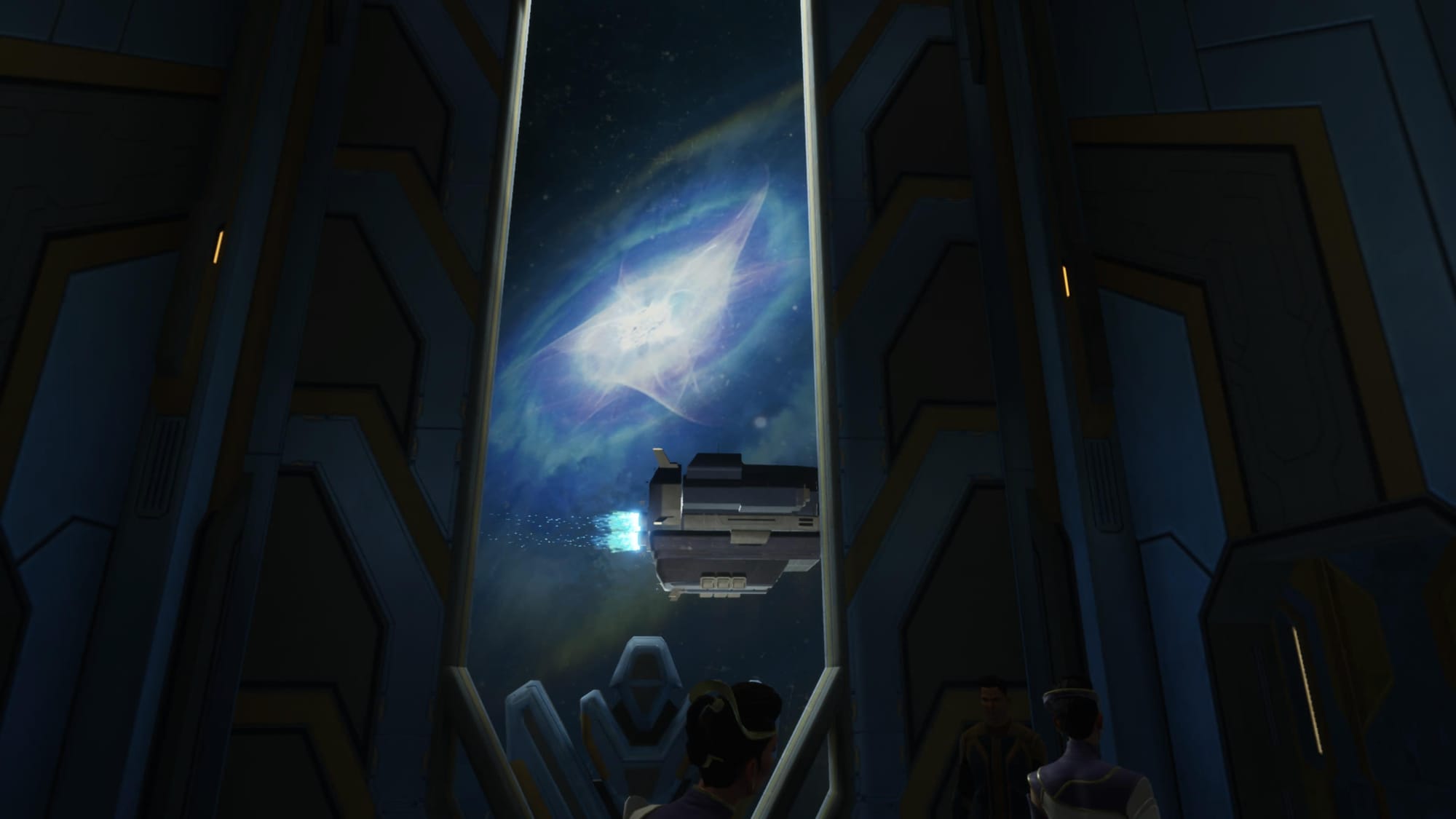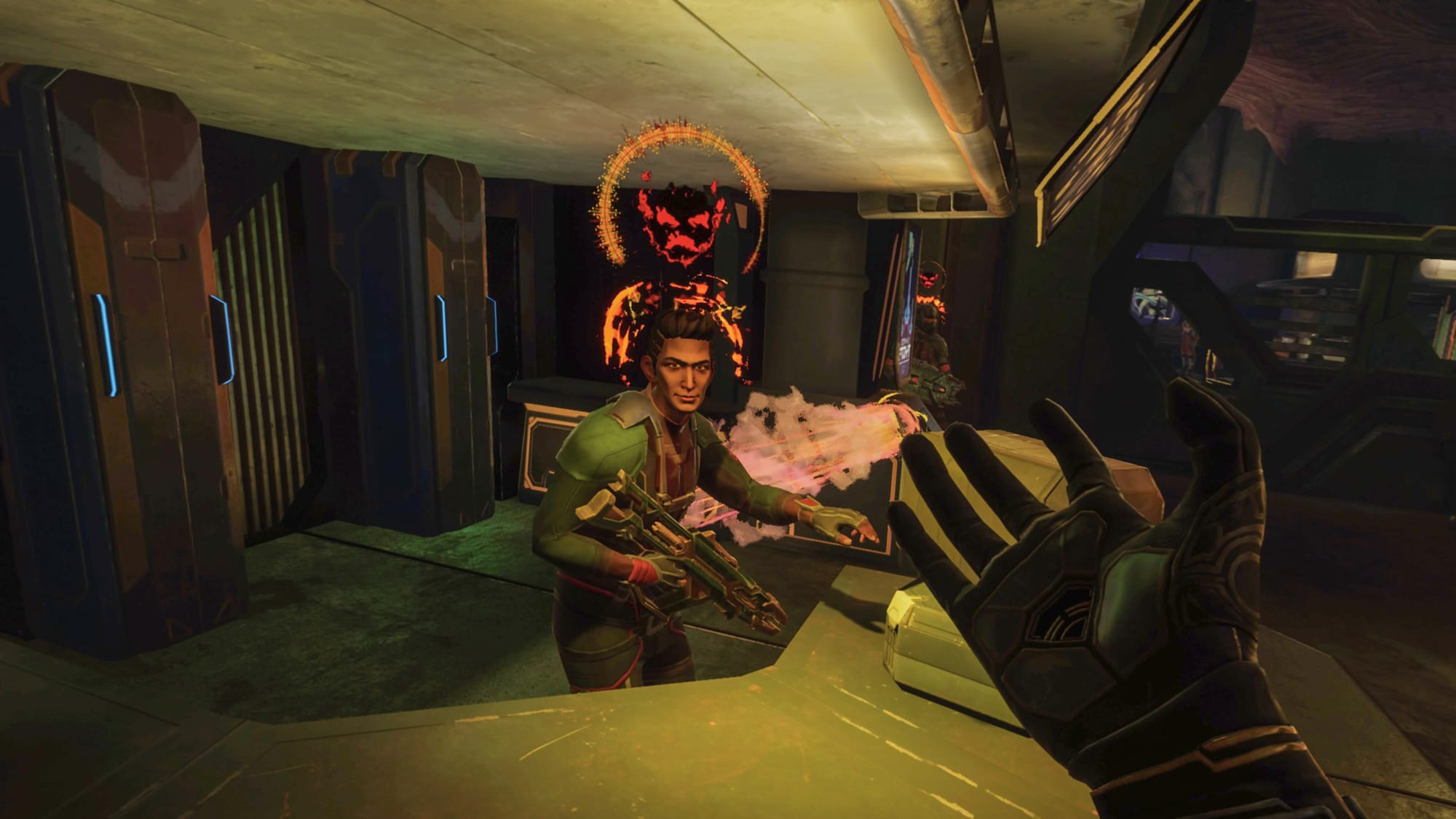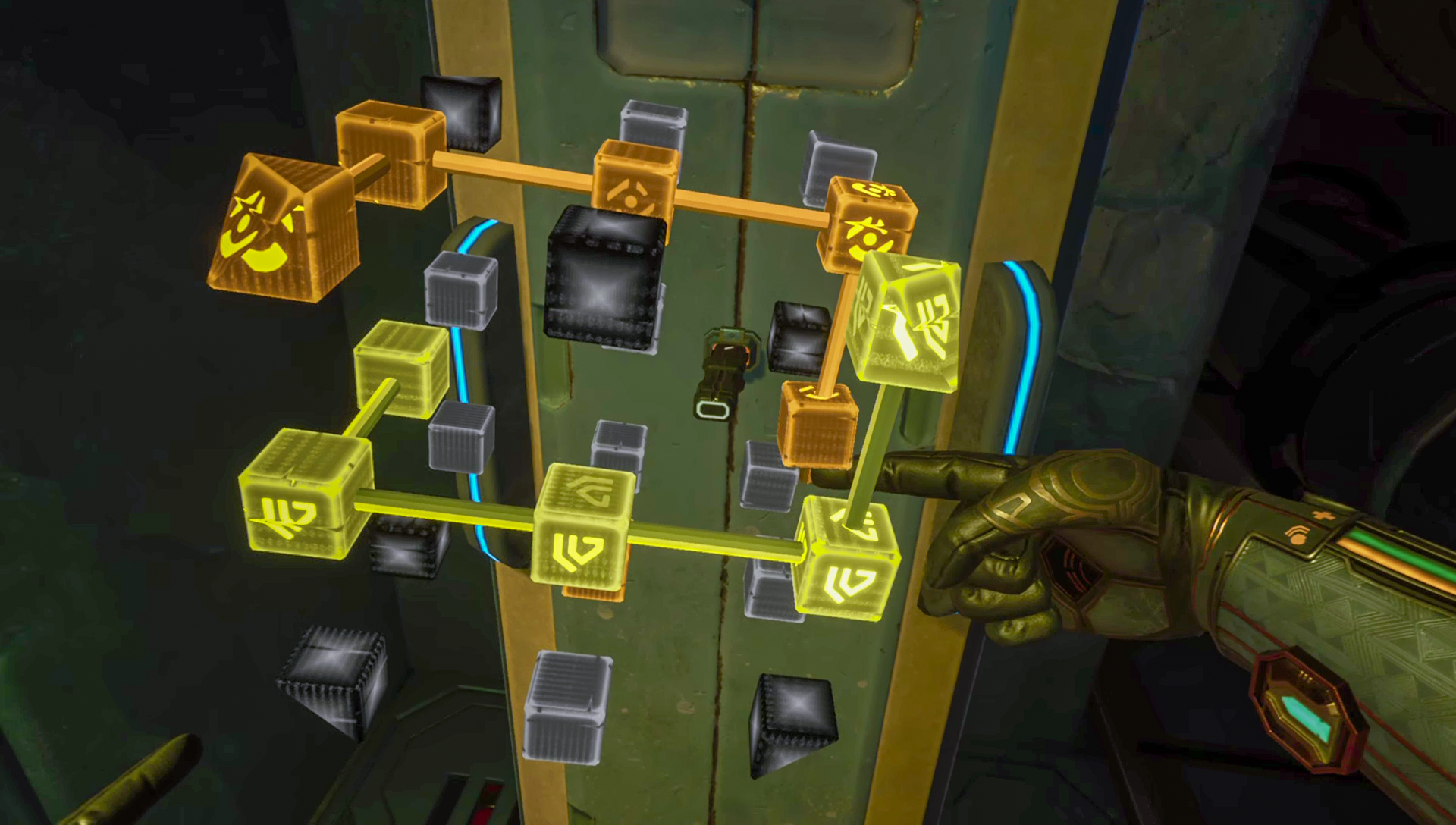If you spend a few minutes searching a platform’s catalog, you might find that the vast majority of games focus on one novel idea, an interesting twist on a VR-related mechanic or premise that encourages replayability. If you spend a few minutes searching a platform’s catalog, you might find the vast majority of games focus on one novel idea, an interesting twist on a VR-related mechanic, or a simple premise that encourages replayability.
Journey to Foundation introduces itself as an adventure game that emphasizes player choice and interesting twists based on your actions along the way. Based on Isaac Asimov’s sci-fi book series, you’re thrust into an intergalactic conflict through the eyes of Ward, a character who can make use of mental abilities during both conversations and enemy encounters.
Journey To Foundation – The Facts
: A story-driven adventure game based on Isaac Asimov’s book series.Platforms
: , Quest, PSVR 2, PC VR (review conducted on PSVR 2)PicoRelease Date
: Out now on Quest, Pico and PSVR 2, June 7 on PC VR.Developer
: Archiact InteractivePrice:
$39.99It’s an ambitious premise that kept me invested during this seven-hour journey. The game’s presentation and many initially appealing mechanics are not what one would expect for a 2023-era title. The developer Archiact Interactive prioritized the storyline and characters. This, for better or worse, is the dominant strength of Journey to Foundation.
Told over the span of six chapters, you navigate linear spaces — from ship interiors to caves and outposts across multiple planets — while talking to characters, solving fairly simple puzzles, and engaging in the occasional gunfight. The structure is simple and doesn’t try to be anything it’s not. There isn’t a lot of exploration in the game. There are small gadgets with voice recordings or text that provide information about characters or the world in which the game is set. I would only use them when I was looking for additional details to complete an objective. The compass that you wear on your wrist is always pointing in the right direction. Most puzzles are simple. Similar to NPCs, you will usually find the item nearby. The biggest hurdle is usually opening a lock box or listening to voice recordings to reach them. The interactivity of your hands with the digital world shines in these moments, adding to the immersion. Over time, however, they become formulaic.

Thankfully, the story makes it easy to look past some of these shortcomings. It’s not necessary to have read Isaac Asimov books, but the initial exposition of the story can get a little overwhelming. Journey to the Foundation is driven by the focus placed on the characters and your interactions with them. Ward’s voice also makes the back and forth chatter feel more natural. Conversations are at the heart of any story, so it is important to have all of these components. Conversations in Journey of Foundation are made more interesting when your decisions come into play. Journey of Foundation conversations are most interesting when you make decisions. Your organization asks you to infiltrate a few of the key characters that you meet. You can then use the information you have learned to steer the conversation towards your interests. You can also use mental powers to determine the emotion the NPC is experiencing, and this will usually lead to a different dialogue choice. You can also suppress certain moods, like fear, to get the result you need and continue with your objective.
Now, while the decisions
do
matter in both the short and long run, the mental powers becomes gimmicky fast. It’s not that deep, but it is a way to get the job done. You can scan an order member until you find the dialogue you want, then continue on with the task. These abilities can also be used in combat, to distract enemies or take them out from a distance. This allows you to sneak around an area unnoticed. It was often easier to draw my weapon and deal with enemies up front, even though gunfights can be boring. The environments can be dull and low-resolution backgrounds take you right out of the feeling of outer space. I had to stop the game or restart it several times because a particular puzzle, where you connect nodes on a floating cube, would get stuck. It all adds to frustration, especially considering it’s a fairly recent VR title.

Journey to Foundation is a fairly slow-paced game most of the time, so you should be able to play it for long periods even without extensive VR experience. If you’re finding it hard to navigate, there are options to choose your dominant hand, adjust your height and holster position, enable or disable vignette, pick artificial stick-based locomotion (based on either your hand or your head) or teleportation movement, as well as either snap or smooth camera rotations.
Yet, I can’t say I wasn’t rewarded for sticking along regardless of my complaints. The fact that I was able to calm down a prisoner and offer them a bargain, but then find out it wasn’t signed, meant I had the option to keep the person in their cell. The character was given a second opportunity, despite their past criminal history. I kept my word. Later on, a decision I made on a whim had an immediate negative reaction from one of the factions, creating ripple effects that were exciting to witness unfold.The Walking Dead: Saints & SinnersJourney to Foundation – Final Verdict
Journey to Foundation tells a compelling story with no shortage of ambition in its methods to make you a part of it, ultimately shaping its outcome. The experience is not always seamless, but many of the actions you take in-between make it feel like an old VR experiment. That period might be in the past now, but in a time where many VR games continue to bet on spectacle and feel rather than worlds and characters leaving a mark, I’m glad that Archiact committed to the premise’s strengths from the beginning.

UploadVR uses a 5-Star rating system for our game reviews – you can read a breakdown of each star rating in our
.